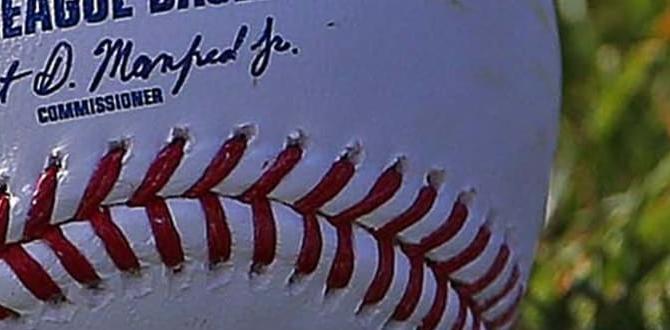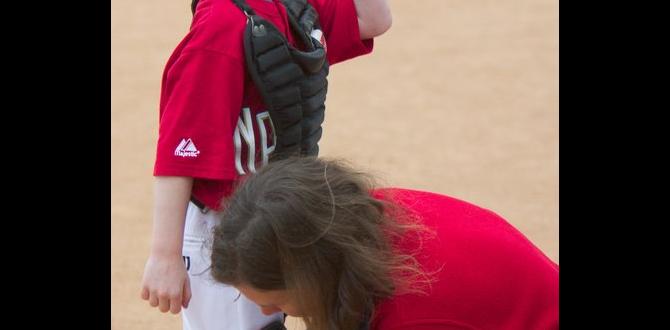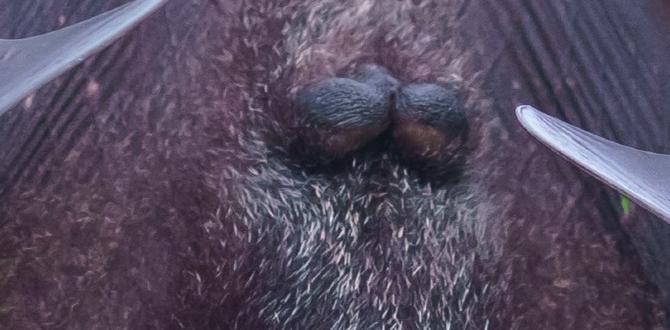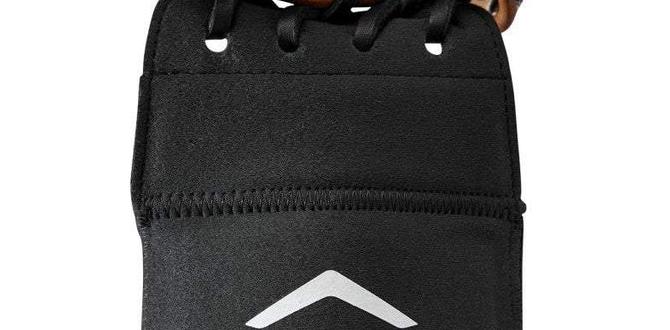Youth Catcher Gear Sets: Find the Best Protection and Comfort for Young Players. Our guide highlights top-rated sets that offer superior safety, durability, and fit, ensuring young catchers can perform their best.
Getting a young catcher the right gear might seem like a puzzle. It’s tough to know what makes a good set when you’re just starting out. You want your player to be safe, comfortable, and confident behind the plate. But with so many options, how do you choose? This guide breaks down what to look for and shares some of the best youth catcher gear sets available. We’ll help you make a smart choice so your young athlete can focus on the game.
Why the Right Youth Catcher Gear Matters
Catching is a demanding position in baseball. It requires quick reflexes, a strong arm, and, most importantly, excellent protection. For young players, this protection is even more crucial. Their bodies are still developing, and the impact from foul balls, errant pitches, and collisions can be significant. A quality youth catcher gear set is designed to absorb these impacts effectively, reducing the risk of injuries like bruises, sprains, and even more serious issues. Beyond safety, the right gear enhances a player’s confidence. When a young catcher feels secure and comfortable, they can focus on their performance, calling pitches, blocking the plate, and throwing runners out, rather than worrying about being hit.
Think of it this way: a solid catcher’s mitt feels like an extension of your hand, allowing for secure catches. A helmet that fits well and offers good visibility means you can see the game clearly. Leg guards that stay in place provide peace of mind when blocking. When all these pieces work together, a young player can truly excel. It’s about empowering them to play at their best, knowing they are well-protected.
Key Components of a Youth Catcher Gear Set
A complete youth catcher gear set typically includes several essential pieces. Each component plays a vital role in protecting the player. Understanding these parts will help you evaluate different sets and make an informed decision.
1. Catcher’s Helmet (Mask & Helmet Combo)
This is arguably the most critical piece of equipment. A catcher’s helmet protects the head and face from high-speed pitches and foul balls. Modern youth helmets are designed with both protection and ventilation in mind. Look for a helmet that:
- Fits snugly without being too tight.
- Offers a wide field of vision.
- Has a cage designed to protect the face and throat.
- Is lightweight for comfort during long games.
- Meets safety standards (e.g., NOCSAE standards).
Many youth sets come with an integrated helmet and mask, providing a streamlined and secure fit. This combination ensures the mask stays properly positioned and offers robust protection for the face.
2. Chest Protector
The chest protector shields the chest, ribs, and stomach from foul tips and collisions at the plate. Good chest protectors are:
- Padded to absorb impact.
- Adjustable to ensure a secure and comfortable fit
- Designed to allow for a good range of motion.
- Breathable to help manage sweat.
The length and width of the chest protector are important for full coverage. A protector that’s too short might not cover the vital areas, while one that’s too wide can be cumbersome.
3. Leg Guards
Leg guards protect the shins, knees, and feet. They are designed to withstand direct impacts from pitches and provide stability when blocking. Key features of good leg guards include:
- Molded and reinforced shin plates for maximum impact resistance.
- Adjustable straps for a secure, custom fit that prevents shifting.
- Knee caps designed to protect the joint and allow for freedom of movement.
- Toe protection to guard the front of the foot.
- Ventilation to keep the legs cool.
Properly fitting leg guards are essential for a catcher’s ability to get into a good blocking stance and to feel confident receiving pitches.
4. Catcher’s Mitt
While often sold separately from gear sets, a catcher’s mitt is indispensable. It’s specifically designed for receiving fast pitches. A youth catcher’s mitt should:
- Have a deep pocket to secure the ball.
- Be pre-broken-in or easy to break in.
- Have good padding to reduce sting.
- Be the correct size for a youth player (typically 31-34 inches).
While not always included in a “gear set” package, it’s a crucial part of the catcher’s arsenal and something parents should consider when outfitting a young player.
Choosing the Right Youth Catcher Gear Set: What to Look For
When you’re buying a youth catcher gear set, it’s not just about picking the cheapest or the most expensive option. Several factors contribute to making a set suitable for a young player. Keeping these points in mind will help you find gear that offers the best blend of protection, comfort, and value.
Fit and Sizing
This is paramount. Gear that doesn’t fit properly isn’t just uncomfortable; it can be unsafe. Ill-fitting gear can shift, leaving vulnerable areas exposed or hindering a player’s movement. Always check the manufacturer’s sizing charts. Most youth gear is sized based on age or height. If possible, have your child try the gear on before purchasing. Ensure the helmet fits securely, the chest protector stays in place, and the leg guards are snug and provide full coverage.
Protection and Safety Standards
Look for gear that meets recognized safety standards. In baseball, the NOCSAE (National Operating Committee on Standards for Athletic Equipment) standards are particularly important for protective equipment. Gear that meets these standards has been tested to ensure a certain level of protection against major impacts. Higher-quality materials and construction techniques generally mean better protection.
Comfort and Breathability
Young players will wear this gear for extended periods, especially during games and practices in warm weather. Gear that is too heavy, too hot, or restrictive can be a major distraction and lead to fatigue. Look for:
- Lightweight designs.
- Ventilation holes or breathable materials.
- Padded interiors for comfort.
- Flexible components that don’t impede movement.
Comfort directly impacts a player’s ability to focus and perform well.
Durability and Value
Youth gear can take a beating, so durability is important. While you don’t need professional-grade equipment for young players, look for sturdy construction that can withstand regular use. Investing in a slightly higher-quality set might save you money in the long run if it lasts longer than cheaper alternatives. Consider the materials used, the stitching, and the overall build quality. The “value” is in finding that sweet spot between adequate protection, reasonable comfort, and a price that fits your budget.
Player’s Age and Skill Level
Gear is often designed with particular age groups in mind. A set for an 8-year-old will differ from one for a 13-year-old. Younger players might need lighter, more forgiving gear, while older, more experienced players might benefit from more advanced protection. As players develop, their needs might change, so consider if the gear offers some adjustability to grow with them a little.
Top Youth Catcher Gear Set Picks for 2024
Based on industry reviews, player feedback, and our own assessment of key features, here are some of the top youth catcher gear sets that consistently perform well. These sets offer a great balance of protection, comfort, and value for young players.
1. Easton Youth Game Catcher’s Equipment Set
Easton is a well-respected brand in baseball, and their youth catcher’s set is a popular choice for good reason. It’s designed for younger players and focuses on providing essential protection without being overly bulky.
- Helmet: Features a protective cage and a comfortable fit.
- Chest Protector: Offers good coverage and impact absorption.
- Leg Guards: Designed for ease of movement and secure fit with adjustable straps.
- Target Audience: Generally recommended for ages 7-12, depending on sizing.
- Pros: Well-known brand, good value, comfortable for younger players, decent protection.
- Cons: May not be as robust for older or more aggressive players.
2. Wilson EZ Gear Catcher’s Kit
Wilson’s EZ Gear kit aims to simplify the gear selection process for parents and young players. It often comes as a full package, making it an easy first choice for beginners.
- Helmet: Integrated mask and helmet system for straightforward use.
- Chest Protector: Offers essential torso protection.
- Leg Guards: Designed for quick on-and-off and a secure, comfortable fit.
- Target Audience: Typically for younger, beginner players (ages 7-10).
- Pros: Very easy to use, good for absolute beginners, affordable, lightweight.
- Cons: Less adjustability, might be outgrown quickly by some players.
3. All-Star Pro Series Youth Catcher’s Gear (Specific Models)
All-Star is renowned for its high-quality catcher’s gear, and their youth offerings are no exception. While individual components might vary, their “Pro Series” for youth often stands out for its advanced features and superior protection.
- Helmet: Advanced design with excellent ventilation and a secure cage.
- Chest Protector: Multiple layers of padding and advanced impact dispersion technology.
- Leg Guards: Contoured design for better fit and mobility, with robust protection.
- Target Audience: Suitable for older youth players (ages 10-13) and those playing more competitively.
- Pros: Excellent protection, high-quality materials, durable, good adjustability for a growing player.
- Cons: Higher price point, can be slightly heavier than beginner sets.
4. Schutt Sports Uprising Youth Catcher’s Set
Schutt is another brand known for its protective equipment, particularly in football, and their baseball gear benefits from that expertise. The Uprising set is designed with safety and comfort in mind.
- Helmet: Features a sleek design with good ventilation and robust face protection.
- Chest Protector: Designed to absorb impact effectively and offer good coverage.
- Leg Guards: Offers excellent adjustability and a secure fit for various leg shapes.
- Target Audience: Good range for youth players, often suitable for ages 8-12.
- Pros: Strong protection, comfortable padding, good adjustability, durable construction.
- Cons: Can be a bit pricier than some basic sets.
5. Mizuno Samurai Series Youth Catcher’s Gear
Mizuno is a trusted name in baseball, and their Samurai Series offers a blend of protection and performance tailored for youth catchers.
- Helmet: Features a secure fit and a cage designed for optimal visibility and protection.
- Chest Protector: Designed to provide broad coverage and effective shock absorption.
- Leg Guards: Engineered for a snug fit, allowing for dynamic movement when blocking or fielding.
- Target Audience: Appeals to a wide range of youth players, typically ages 7-12.
- Pros: Reliable brand, good balance of protection and mobility, comfortable fit.
- Cons: Specific sizing can be important to get right; ensure it fits the individual child.
How to Properly Fit and Adjust Youth Catcher Gear
Once you’ve purchased a youth catcher gear set, the work isn’t done. Proper fitting and regular adjustments are crucial for ensuring the gear is effective and comfortable. Here’s a step-by-step guide:
Fitting the Helmet
- Placement: The helmet should sit level on the player’s head, not tilted too far back or forward.
- Snugness: It should feel snug. You should not be able to easily jiggle it from side to side. The helmet should not move independently of the player’s head when they shake it.
- Chin Strap: The chin strap should be adjusted so that it’s comfortable but secure. The cage should not interfere with breathing or vision.
- Jaw Protection: Ensure the cage extends low enough to offer good jaw and throat protection. Many youth helmets have an extended jaw guard.
Adjusting the Chest Protector
- Placement: The chest protector should cover the entire chest area, extending down to the stomach. It should not be too short, leaving the diaphragm exposed.
- Straps: Most chest protectors have adjustable straps in the back. Tighten these so the protector stays in place without restricting breathing. It shouldn’t slide down or shift significantly when the player moves.
- Shoulder Pads: Ensure the shoulder pads are positioned correctly and comfortably. Some have adjustable straps to customize the fit.
Securing the Leg Guards
- Knee Caps: The knee caps should align directly over the player’s knees. They should not be too high or too low.
- Shin Coverage: The shin plate should extend all the way down to the top of the player’s cleats, providing full coverage even when they are in a squatting position.
- Straps: Fasten all straps securely. They should be tight enough so the guards don’t move during play but not so tight that they cut off circulation or cause discomfort. Pay attention to the straps around the calf and ankle.
- Wheels/Toe Guards: If the leg guards have tow extensions or “wheels,” ensure they don’t interfere with the player’s ability to stand or move.
Regular Checks
After a few practices or games, re-check all the fitting points. Players may feel comfortable with adjustments that initially seemed a bit off. Also, as young athletes grow, gear will need to be readjusted or replaced. Check straps for wear and tear, and inspect all paddings and shells for damage.
Maintaining Your Youth Catcher Gear
Proper care and maintenance will extend the life of your child’s catcher gear and ensure it continues to provide the best protection. Think of it like maintaining a car; a little upkeep goes a long way!
Cleaning
- Wipe Down: After each use, use a damp cloth or a mild soap solution to wipe down the exterior of the helmet, chest protector, and leg guards. This removes sweat, dirt, and grime.
- Interior Padding: Detachable padding can often be hand-washed with mild soap and cold water. Ensure it is thoroughly air-dried to prevent mold and mildew. If padding is not removable, spot-clean it and allow it to air dry completely.
- Avoid Harsh Chemicals: Do not use strong detergents or solvents, as they can degrade the materials and compromise the gear’s integrity.
Drying
- Air Dry: Always air dry catcher gear. Never put it in a clothes dryer, as the heat can warp plastics and damage padding and straps.
- Ventilation: Allow gear to dry in a well-ventilated area, preferably out of direct sunlight, which can also degrade materials over time.
Storage
- Cool, Dry Place: Store gear in a cool, dry place when not in use. Avoid leaving it in a stuffy equipment bag or a hot car for extended periods.
- Proper Positioning: Don’t stack heavy objects on top of the gear, as this can crush padding or warp plastic components.
Inspection
- Regular Checks: Before and after each season, thoroughly inspect all pieces of gear for cracks, tears, loose straps, or worn-out padding.
- NOCSAE Standards: Pay close attention to any signs of damage that might compromise the safety standards, especially on the helmet and mask. If a piece of gear has been involved in a significant impact or shows visible damage, consider replacing it.
Beyond the Set: Essential Catcher Accessories
While a gear set covers the core protection, there are a few other items that can significantly enhance a young catcher’s performance and comfort. These aren’t always included in a “set” but are vital for the position.
1. Catcher’s Mitt
As mentioned earlier, a dedicated catcher’s mitt is crucial. It’s different from a fielder’s glove with its padded design, deep pocket, and smaller size. For youth players, aim for a mitt in the 31-34 inch range, depending on age and league rules. A good mitt is an investment that directly impacts a catcher’s ability to handle pitches.
2. Sliding Shorts or Padded Compression Gear
These provide an extra layer of comfort and protection against bruising on




